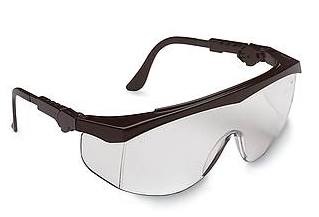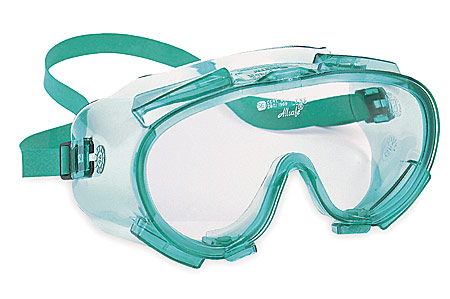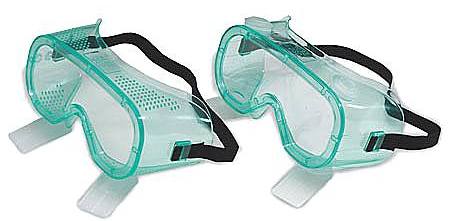According to the U.S. Consumer Product Safety Commission, there are more than 15,000 welding equipment-related eye injuries a year, with power tools coming in second at nearly 10,000 injuries per year.
March is Workplace Eye Health and Safety Month, a time to remember that 90 percent of all workplace eye injuries are preventable with the proper safety wear. Did you know that one million Americans have already lost some degree of sight due to an eye injury? Don’t let this happen to you, or your co-workers.
Eye protection isn’t one size or style fits all. To prevent injuries you must wear the eye protection matched to the hazards of the job you are doing.
All protective eyewear should meet American National Standards Institute (ANSI) Standard Z87.1.
Safety Glasses with side shields. These are appropriate for general use with non-powered hand tools, low energy power tools, shop work, lawn mowing, etc.

Indirect Vent Goggles – “Chemical Goggles.” These protect against same hazards as direct vent goggles AND liquid splash. They are appropriate for handling chemicals that could injure the eyes.
Direct Vent Goggles – “Woodworking Goggles.” These protect against flying dust and particles and are adequate protection for using weed trimmers or windblown dust.
Face Shields are never used alone! With safety glasses, they protect against eye and face hazards from high-energy power tools like abrasive saws, handheld grinders, and powder actuated tools. With indirect vent goggles, they protect against eye and face hazards from hot liquids or corrosives.
Other important tips to remember include:
- Be aware of hazards at your worksite. Among the most common eye hazards are flying particles from machine operations such as cutting, grinding, chipping and sawing; dust, dirt and rust particles; sparks and harmful light rays from welding; and splashes from corrosive or irritating chemicals.
- Ensure proper fit of your eye protection and make sure they are clean and in good condition before and after each use. Use a disinfectant to clean the lenses.
- Replace damaged or defective eyewear immediately.
- Know the location of safety showers and eyewash stations whenever you are using acids or caustic chemicals. If chemicals are splashed in the eye(s), flush for at least 15 minutes.
- Seek first aid and medical attention for all eye injuries.
FACT: Most eye injuries can be prevented by wearing appropriate protective eyewear!
Resources: VML Insurance Programs (VMLIP) offers a number of free multimedia resources to assist members with their training needs. The video: Eye Protection: See the Whole Picture (#314) is available in VMLIP’s Multimedia Library.
The 18 minute DVD is designed to help employees understand the importance of using proper eye protection, and provides information on avoiding eye injuries and emergency procedures should an accident occur.
VMLIP offers more than just coverage. We are partners in risk management. How does your insurer stack up? Having all lines of coverage with VMLIP ensures that your organization is receiving comprehensive coverage and a wide variety of value-added services tailored to Virginia’s local governmental entities. Call for a quote today: (800) 963-6800. For more information on VMLIP visit: www.vrsa.us or follow us on Facebook.
** VMLIP blog postings are offered for VMLIP members to utilize in strengthening their risk management efforts. See copyright information for clarification on sharing this information.





